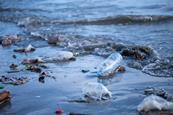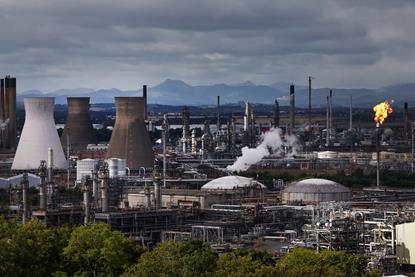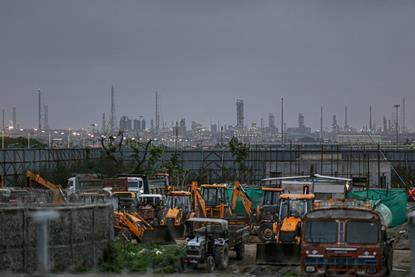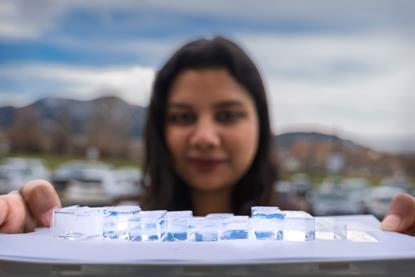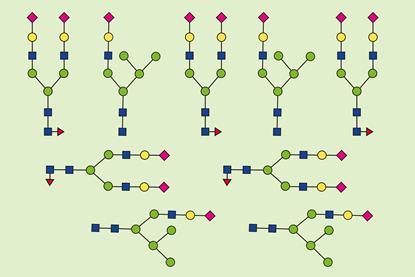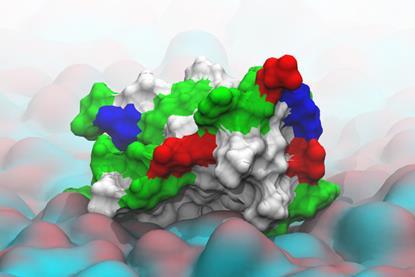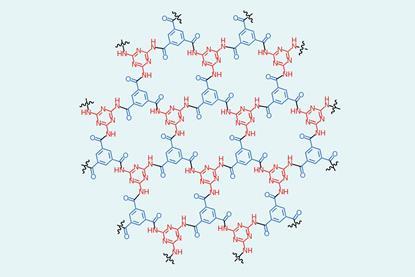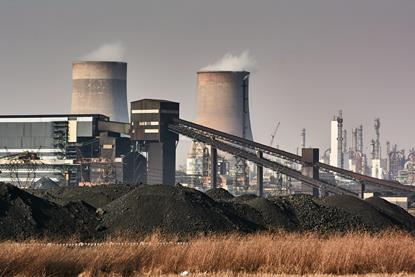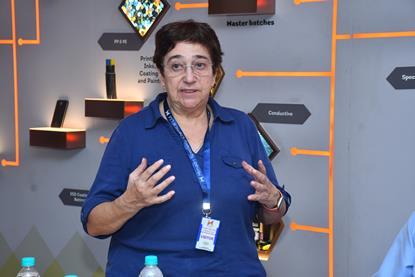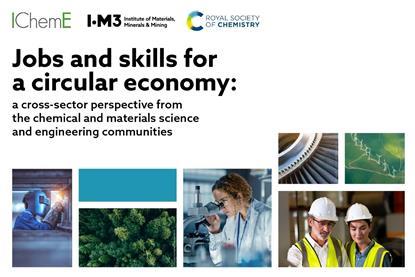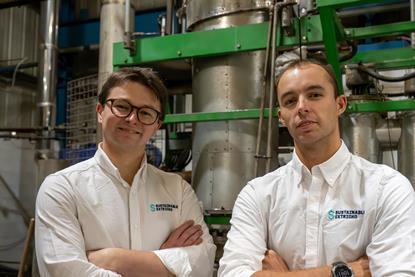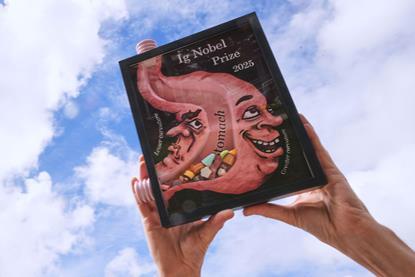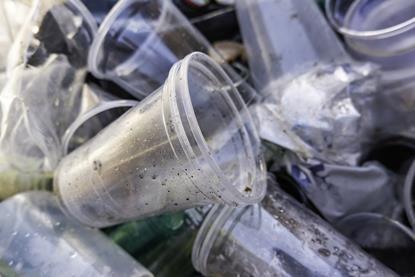Plastics and polymers
In this collection we explore advancements in plastics and polymers research, covering topics such as polymer synthesis, characterisation techniques, material properties, biodegradable polymers, plastic waste and recycling, and the impact of microplastics and PFAS on the environment and human health.
Magnetic spin waves could slash computer energy consumption
Researchers are developing magnonic processors that use magnetic spin waves instead of electric current to process data. Rachel Brazil discovers how it could potentially reduce energy consumption by 90% and offer new possibilities for neuromorphic computing
How tyres are turning green
As the shift to using renewable and recycled materials in car tyres accelerates, Nina Notman talks to the manufacturers driving the change
Clearing up the compostable plastic mess
Rather than a potential triumph, the compostable plastics we use look increasingly like a tragedy. Andy Extance looks at the problems and seeks solutions
Conserving Barbie from degradation
Although she is a cultural icon, conserving Barbie has its challenges: as with most plastic toys and dolls, she was not made to last. Rachel Brazil investigates how conservation scientists are approaching this sticky problem
Editing polymer backbones
Changing the chemical makeup of a polymer backbone could revolutionise how we make, use and even recycle plastics. James Mitchell Crow reports
The wonderful wizards of wood
Clever chemistry can turn humble timber into a sustainable material with many uses, Kit Chapman finds
Polymers
Structure as a strategy
Progress in materials chemistry has often come from changing what things are made of, yet today we understand that how those components are arranged is just as important
Chemicals industry roundup 2025
Europe hit hard by China’s independence push, but India is growing
Insulating window material prevents heat loss while allowing more light through than glass
Easy to make polymer could be used for energy efficient buildings
Exquisite stereochemical control will allow creation of millions of unique polymers
New method take inspiration from established techniques like those used to synthesise DNA
Ineos asks EU to intervene over ‘unfair’ chemical imports
Group says 10 key chemicals are being dumped cheaply, harming domestic industry
PFAS
Inhaler propellant switch is worth the effort
Memories of a year spent testing new inhaler valve designs
PFAS spring new surprise as some are far more acidic than thought
The acid dissociation constants for some PFAS are significantly lower than past metrics have indicated, with implications for their persistence and spread
Chemours ordered to immediately limit PFAS emissions into Ohio River
US judge grants injunction to reduce Gen-X discharges from West Virginia plant to permitted levels
DuPont and spin-offs settle with New Jersey over PFAS contamination
Proposed deal with the US state includes $875 million in damages, plus clean-up funds
Letters: July 2025
Readers ponder polymorphs, period products, PFAS and more
Plastic recycling
Transforming plastic waste into an efficient CO2 capturing material
Upcycled amide can efficiently capture carbon dioxide from flue gases, as well as air
What happens next after the plastic treaty negotiations fail once again?
Bold action may now be needed to secure agreement on plastic pollution
Negotiations to create a global plastic pollution treaty collapse again
Geneva meeting descends into chaos with hastily revised treaty text rejected by member states
Cheap virgin plastic limits recycling potential
Global plastic treaty negotiations risk being derailed by minority opposed to production caps
Plastic treaty negotiations go down to the wire
Capping production and limiting use of harmful chemicals are key topics for negotiators to consider
Microplastics
What happens next after the plastic treaty negotiations fail once again?
Bold action may now be needed to secure agreement on plastic pollution
Plastic treaty negotiations go down to the wire
Capping production and limiting use of harmful chemicals are key topics for negotiators to consider
Multi-disciplinary scientists are ready to solve global chemical pollution
Are governments ready to act?
Cellulose and chitin foam can remove nearly all microplastics from water
Biopolymer foam remains effective in water with heavy metals and other pollutants
Nanoplastics found to interfere with activity of antibiotic
Microscopic polymer pieces can decrease efficacy of drug
Sponsored
Digital product passports: building radical transparency for polymers in liquid formulations
Industry giants join alliance that is working to develop a digital record that will track a product’s entire lifecycle and environmental impact
Industry and academic leaders unite to drive polymer sustainability
Leading industry figures and academics talk about the challenges faced in the transition to sustainable PLFs
Advances in lignin-derived polymers: Enhancing toughness and creating sustainable thermosets
Join us to discover how the rapid development of bio-based thermosets is transforming polymer science
Evaluating safety and performance of recycled plastics
Download this free bundle now and explore ways to tackle the challenges we face when screening recycled plastics for safety and material properties.
Thermal analysis in the development of long-acting injectable systems
Evaluating new polymers for slow-release drug delivery could deliver better treatment for patients
Is this the future of bioplastics upcycling?
Learn more about chemical methods for a new route to active upcycling of PLA
Sustainability applies to all polymers, not just plastics
Characterisation and process optimisation of recycled resins for the polymer industry
How analytical chemistry is enabling efficient polymer recycling
Driving environmental sustainability across the polymer supply chain with a digital chemistry strategy
- Opinion
Structure as a strategy
Progress in materials chemistry has often come from changing what things are made of, yet today we understand that how those components are arranged is just as important
- Opinion
Reprieve for Grangemouth ethylene
UK government agrees £150 million deal to support the country’s last ethylene production plant
- Business
Chemicals industry roundup 2025
Europe hit hard by China’s independence push, but India is growing
- Research
Insulating window material prevents heat loss while allowing more light through than glass
Easy to make polymer could be used for energy efficient buildings
- Research
Exquisite stereochemical control will allow creation of millions of unique polymers
New method take inspiration from established techniques like those used to synthesise DNA
- Opinion
Changing the rules of global chemicals trade
Chemical dumping claims reflect US and China’s focus on national interests ahead of global markets
- Business
Ineos asks EU to intervene over ‘unfair’ chemical imports
Group says 10 key chemicals are being dumped cheaply, harming domestic industry
- Research
Charge-switching polymer could hold the key to needle-free insulin gel
Animal tests reveal zwitterionic polymer can transport insulin through skin and regulate blood glucose
- Research
2D polymer films approach exceptional impermeability of pristine graphene
Spin-coated polyaramids could protect food and solar cells from air
- Business
South African Lawsuit challenges Sasol’s ethylene monopoly
Plastics producer Safripol says high prices mean it can’t compete with imported materials
- Business
How a weak rubber supply chain threatens US national security
Irene Yurovska raises the alarm on US reliance on Chinese imports for critical chemical additives
- Feature
Magnetic spin waves could slash computer energy consumption
Researchers are developing magnonic processors that use magnetic spin waves instead of electric current to process data. Rachel Brazil discovers how it could potentially reduce energy consumption by 90% and offer new possibilities for neuromorphic computing
- Business
Algenesis cracks diisocyanate problem to make fully bio-based polyurethane
Process combines algal fermentation with flow chemistry and avoids hazardous phosgene
- Opinion
Going round in circles over skills
Closing skills gaps in key professional groups requires collaboration between government, industry and educators
- Business
Sailing towards recycling composite textiles
Sustainable Extricko is using superheated steam and pressure to recycle intractable materials used in sailing
- News
Teflon diet earns trio the 2025 Ig Nobel chemistry prize
The prizes that first make you laugh, then make you think reward more irreverent scientific ideas.
- Research
Transforming plastic waste into an efficient CO2 capturing material
Upcycled amide can efficiently capture carbon dioxide from flue gases, as well as air
- Opinion
What happens next after the plastic treaty negotiations fail once again?
Bold action may now be needed to secure agreement on plastic pollution





















